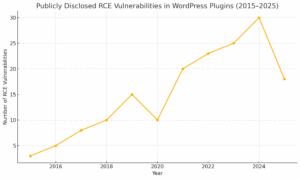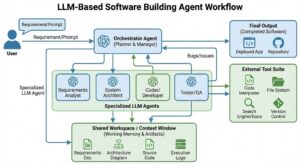בזמן האחרון יוצא לי לכתוב יותר מדי פוסטים שקשורים ל-IT. אין מה לעשות, מתכנת PHP אמור להבין גם בסיסטם ולעבוד בסביבת לינוקס. LAMP זה LAMP.
כמתכנת דרופל, יוצא לי לעבוד עם drush לא מעט והוא הפך להיות חלק חיוני בכל קונסטלציה של שרת הפיתוח שלי. drush (הוגים אותו כ'דרש', אבל כינוי החיבה שלי אליו הוא דרוּש) הוא סקריפט קצר ב-BASH שיי��ום שלו מאפשר לי לבדוק, להתקין ולהפעיל דרופל ומודולים שונים שלו לפי הצורך, בקלות ויעילות הישר מה-shell של הלינוקס, בלי להתעסק עם ברדק ועם ממשק משתמש.
לחלק ממתכנתי דרופל זה יישמע כמו סיוט, למה לא להפעיל, לעדכן או לכבות מודולים באמצעות ממשק הניהול הנוח של דרופל? למי שמעדיף לעבוד עם לינוקס, drush הוא פתרון נוח ומהיר בהרבה.
ההתקנה של drush היא פשוטה ביותר. ראשית, נאתר או ניצור תיקיה מתאימה להתקנה תחת home/your_user/
אני לצורך הדוגמא מתקין את drush בתיקית
/home/ran/Desktop/drush
אני אצור את תיקית drush תחת ה-Desktop שלי ואז אשיג את הקובץ העדכני ביותר של ה-drush ואוריד אותו לתיקית home/ran/Desktop:
wget http://ftp.drupal.org/files/projects/drush-All-versions-3.0.tar.gz
לאחר מכן נפתח את הקובץ:
tar zxf drush-All-versions-3.0.tar.gz
תיווצר לנו תיקיה שנקראת drush. נכנס אל התיקיה ונוודא ש drush/. עובד (שימו לב לנקודה קו נטוי). אם עובד, אז אחלה. במידה והוא נותן לכם אזהרת PHP, התקינו את:
sudo apt-get install php5-cli
ואחרי כן יש לרסט את ה-apache:
sudo /etc/init.d/apache2 restart
אם הכל תקין ועובד כאמור, נכנס ל-bash.rc שלנו באמצעות nano או עורך טקסט אחר:
sudo nano ~/.bashrc
ונוסיף את השורה הזו:
alias drush='/home/ran/Desktop/drush/drush'
נשמור ונצא ולאחר מכן נכתוב ב-shell את המילה bash כדי לאתחל את bash. אם יש הודעת שגיאה, תבדקו את השורה שהוספתם. האם יש בה רווחים או שהיא מוקמה במקום בעייתי?
במידה והקשתם bash ולחצתם על אנטר והכל תקין, אפשר כבר להשתמש ב-drush. הקלידו drush ואנטר, צריך לצאת לכם משהו כזה:
Execute a drush command. Run `drush help [command]` to view command-specific help.
Examples:
drush dl cck zen Download CCK module and Zen theme.
drush --uri=http://example.com status Show status command for the example.com multi-site.
drush help --pipe A space delimited list of commands
Options:
-r <path>, --root=<path> Drupal root directory to use (default: current directory)
-l <uri>, --uri=http://example.com URI of the drupal site to use (only needed in multisite environments)
-v, --verbose Display extra information about the command.
-d, --debug Display even more information, including internal messages.
-q, --quiet Hide all output
-y, --yes Assume 'yes' as answer to all prompts
-n, --no Assume 'no' as answer to all prompts
-s, --simulate Simulate all relevant actions (don't actually change the system)
-i, --include A list of paths to search for drush commands
-c, --config Specify a config file to use. See example.drushrc.php
-u, --user Specify a user to login with. May be a name or a number.
-b, --backend Hide all output and return structured data (internal use only).
-p, --pipe Emit a compact representation of the command for scripting.
--nocolor Suppress color highlighting on log messages.
--show-passwords Show database passwords in commands that display connection information.
-h, --help This help system.
--php The absolute path to your PHP intepreter, if not 'php' in the path.
Commands:
cache-clear (cc) Clear a specific cache, or all drupal caches.
core-cli (cli) Enter a new shell optimized for drush use.
core-cron (cron) Run all cron hooks.
core-rsync (rsync) Rsync the Drupal tree to/from another server using ssh. Relative paths start from the Drupal root folder if a site alias is used; otherwise they start from the current working
directory.
core-status (status, Provides a birds-eye view of the current Drupal installation, if any.
st)
drupal-directory Return path to a given module/theme directory. See --help for more details.
(dd)
help Print this help message. Use --filter to limit command list to one command file (e.g. --filter=pm)
php-eval Evaluate arbitrary php code after bootstrapping Drupal.
php-script (scr) Run php script(s).
pm-disable (dis) Disable one or more modules or themes.
pm-download (dl) Download core Drupal and projects like CCK, Zen, etc.
pm-enable (en) Enable one or more modules or themes.
pm-info Show info for one or more projects.
pm-list (sm) Show a list of available modules and themes
pm-refresh (rf) Refresh update status information
pm-releases Release information for a project
pm-uninstall Uninstall one or more modules.
pm-update (up) Update your project code and apply any database updates required (update.php)
pm-updatecode (upc) Update your project code
search-index Index the remaining search items without wiping the index.
search-reindex Force the search index to be rebuilt.
search-status Show how many items remain to be indexed out of the total.
site-alias (sa) Print site alias records for all known site aliases and local sites.
site-install (si) Install Drupal along with modules/themes/configuration using the specified install profile.
site-upgrade (sup) Run a major version upgrade for Drupal core and contrib modules.
sql-cli (sqlc) Open a SQL command-line interface using Drupal's credentials.
sql-conf Print database connection details using print_r().
sql-connect A string for connecting to the DB.
sql-dump Exports the Drupal DB as SQL using mysqldump.
sql-query (sqlq) Execute a query against the site database.
sql-sync Copy source database to target database using rsync.
updatedb (updb) Execute the update.php process from the command line
variable-delete Delete a variable.
(vdel)
variable-get (vget) Get a list of some or all site variables and values.
variable-set (vset) Set a variable.
watchdog-delete Delete watchdog messages.
(wd-del, wd-delete)
watchdog-list Show available message types and severity levels. A prompt will ask for a choice to show watchdog messages.
(wd-list)
watchdog-show Show watchdog messages.
(wd-show, ws)
אלו גם ההסברים הפשוטים לשימוש ב-drush. כלי חשוב ונחמד לכל מי שמפתח על דרופל.






